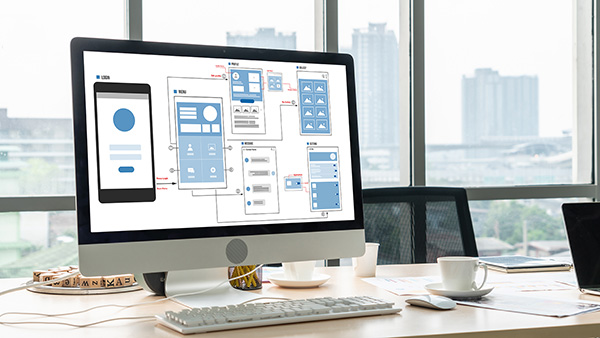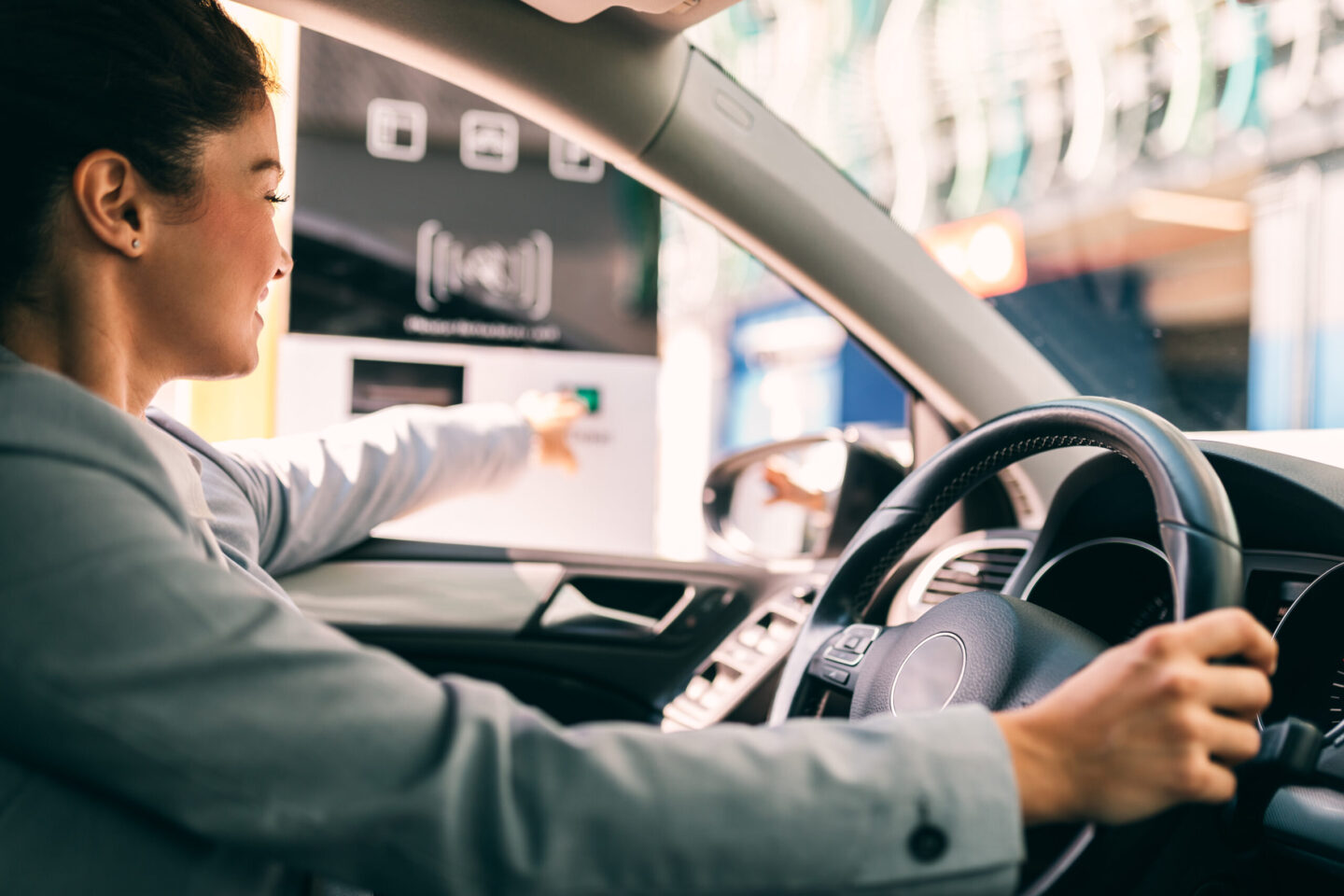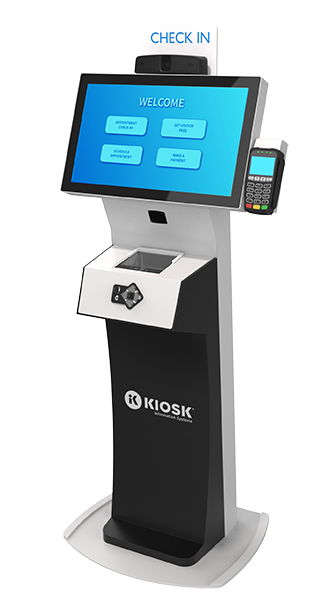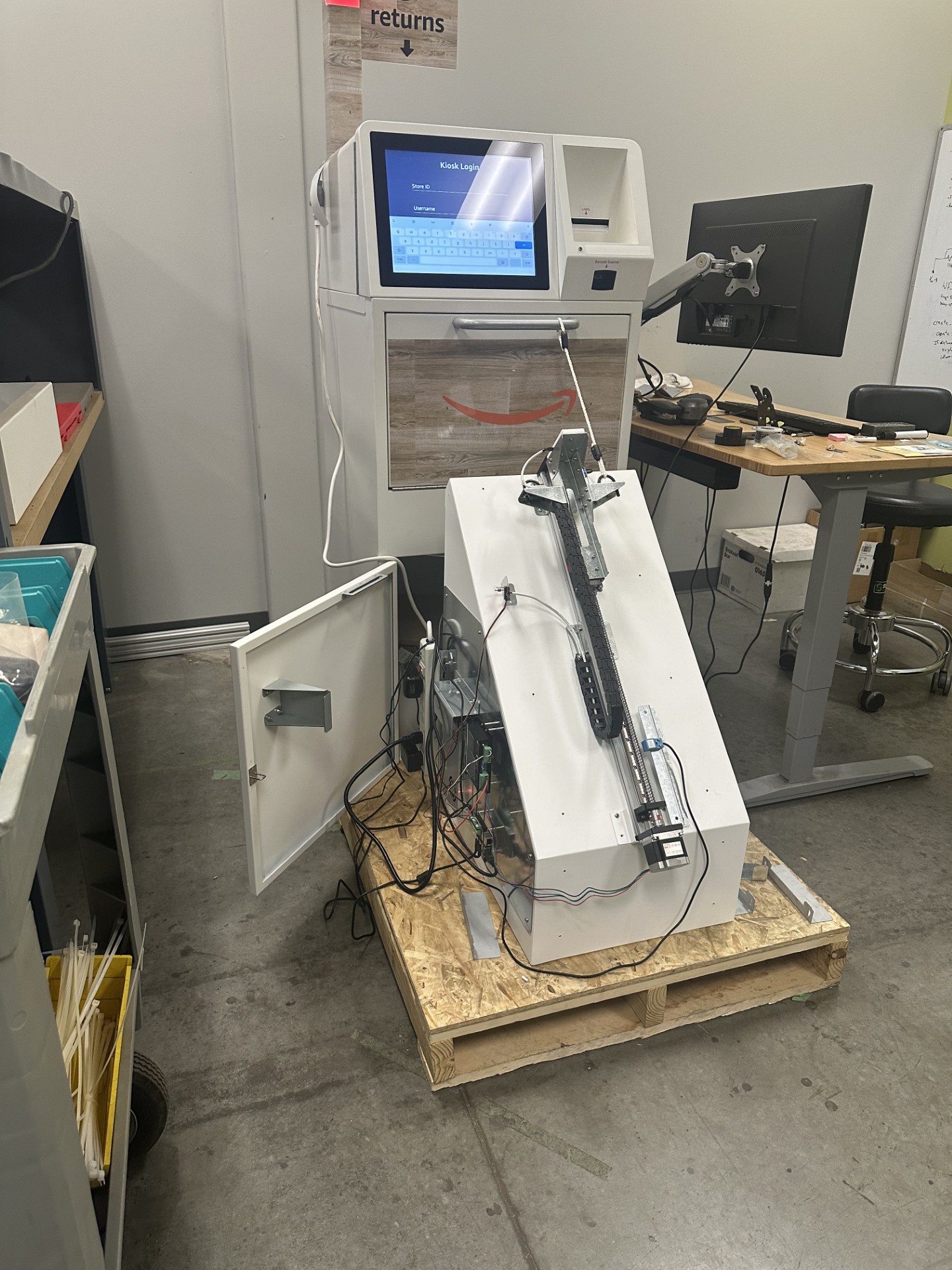Digital signage content can turn an everyday screen into a powerful communication tool. In kiosk settings, it’s more than just a display for promotions. It’s the visual layer that guides users, supports interaction, and simplifies task completion. From wayfinding to check-in prompts, the right content bridges the gap between attention and action.
In this guide, we’ll cover eight best practices for creating digital signage that work in the real world. You’ll learn how to plan content with purpose, design for clarity, ensure accessibility and keep experiences fresh so your kiosk delivers value every time it’s used.
What Is Digital Signage Content?
Digital signage content is the combination of messaging, visuals and interactive elements displayed on a digital screen to inform, guide, or prompt user action.
Businesses across industries are investing heavily in digital signage because customers now expect intuitive, tech-driven interactions. Research shows that digital signage can boost engagement by up to 47% compared to static displays, and kiosks take this one step further by adding interactivity. Done right, signage can speed up transactions, reduce staff workload and create a more enjoyable experience.
This shift is fueled by the rise of mobile-first habits and on-demand services, where people are accustomed to fast, intuitive interfaces. In physical spaces, kiosks meet those expectations by blending digital convenience with face-to-face service capabilities.
Examples of content commonly featured on kiosks include:
- Promotions and advertisements
- Announcements and real-time updates
- Wayfinding instructions and maps
- Menus, service lists, or schedules
- Interactive prompts for check-ins or orders
How Digital Signage Kiosks Improve User Experience
Developing digital signage content for kiosks requires a clear content strategy, asset creation and scheduling. Teams often collaborate across marketing, IT and operations to ensure the messaging is relevant, brand-aligned, and easy for users to act on.
While wall-mounted digital signage often serves as a passive broadcast medium, kiosks are built for interaction. They not only display information but also respond to user input, allowing customers to check in, pay for services or navigate a building. This dual purpose means that content isn’t just decorative; it’s part of the functional interface.
For example, a transportation hub might use kiosk signage to help passengers find gates while also letting them print boarding passes. In healthcare, it might display insurance verification instructions and then allow patients to complete forms on-screen. In both cases, the visuals must not only capture attention but also move the user seamlessly toward their goal.
The most effective kiosk signage focuses on usability. Rather than relying on flashy visuals alone, it prioritizes clarity, aligns with device functionality, and guides users through tasks with minimal friction. Well-designed content reduces errors, speeds up interactions, and ensures users achieve their goals quickly.
Using our own digital signage kiosks as an example, the combination of purpose-driven content and well-matched hardware can transform a routine interaction into a seamless user experience.
How to Create High-Impact Kiosk Signage
Designing kiosk signage is about more than attractive visuals. At its core, it’s about purpose, clarity and functionality. Every on-screen element should align with a user’s needs, reduce decision-making time, and prompt the right next step.
The eight digital signage best practices below will show you how to make digital signage that is clear, accessible, adaptable and consistently effective across environments.
1. Start with the User’s Goal in Mind
Every piece of content for digital signage should start with a clear understanding of what the user is trying to accomplish, whether that’s checking in, placing an order, finding a location or accessing information.
Here are examples of typical user goals in different environments:
- Retail: Product searches, inventory checks, coupon redemption
- Healthcare: Appointment check-ins, insurance confirmation, departmental wayfinding
- Hospitality: Service bookings, event details, amenity directions
Mapping the user journey from start to finish helps anticipate points of confusion. Clear prompts (“Start here”), recognizable icons, and progress indicators can guide users at each step. In high-stress settings, like airports or hospitals, a well-marked path from arrival to goal is critical.
Example: A hospital kiosk might reduce patient check-in time from 10 minutes to 3 minutes by displaying clear instructions, using large buttons for each step, and showing a progress bar to reduce uncertainty.
Learn more about Hospitality Kiosks and how they can guide guests to the right place faster.
2. Focus Your Messaging
The most effective signage delivers the right message at the right moment. What you display depends on the screen’s purpose and the user’s needs in that interaction.
Messaging generally falls into these categories:
- Informational: Store hours, directions, event schedules
- Instructional: “Confirm Your Order,” “Choose a Language”
- Promotional: Discounts, upsells, special offers
A retail kiosk in a busy store might switch between product search tools and limited-time offers depending on whether it’s in idle mode or active use. In a museum, an informational kiosk might guide visitors to exhibits while integrating promotional prompts for memberships or events.
Too much content at once can overwhelm users. The key is to show what’s most relevant to the moment and location. Curating digital signage content ideas this way improves both clarity and engagement with key actions.
Example: In healthcare, an instructional kiosk might display clear, step-by-step check-in guidance during peak hours, but switches to promoting upcoming wellness programs or flu shot clinics during downtime. This targeted rotation ensures the screen stays useful without distracting from critical tasks.
3. Design Content That Prompts User Action
Digital signage in kiosks should not only inform, but also move people to act.
Some common examples of clear, action-focused prompts include:
- “Tap here to begin”
- “Scan to pay”
- “Turn left for Gate B”
To support these calls to action, consider adding:
- Social proof (“Join 2,000+ satisfied customers”)
- Urgency (“Offer ends today”)
- Directional cues (arrows or animated highlights)
Example: In a stadium, a concession kiosk could prompt fans to “Skip the line—order here” with a countdown timer showing how long the current offer is available.
The combination of concise language, visual cues and strategic placement ensures users can act without hesitation.
4. Use Visual Design to Enhance Clarity
The digital signage system design ensures content is seen, understood and acted on in seconds. A strong layout directs attention to the most important information first.
When applying visual design principles, consider the following best practices:
- Visual hierarchy with larger text for main messages
- Consistent brand colors, fonts and logos without sacrificing clarity
- Adequate spacing to prevent visual clutter
- Strong text-to-background contrast for readability
Motion design can also play a role. A subtle animation can guide the eye to a button, while a looping video can provide context for an action, such as demonstrating how to use a self-checkout feature. The key is to avoid unnecessary movement that distracts from the task.
Example: In a transportation setting, a kiosk could highlight gate changes with a flashing border and bold, high-contrast text, while also displaying a static map for orientation. This balance ensures urgent information grabs attention without overwhelming travelers.
5. Optimize for Accessibility and Screen Resolution
Your content must be visually clear and accessible to all users. To make sure your signage meets both technical and accessibility standards:
- Match designs to common digital signage resolutions (e.g., 1920×1080 for landscape)
- Use file formats that preserve quality (PNG for images, MP4 for videos)
- Follow ADA guidelines for touch targets, placement and contrast
- Choose high-contrast palettes and legible fonts for your digital signage designs
Accessibility features can go beyond visuals—audio prompts, voice navigation or haptic feedback can make kiosks more inclusive. In public transportation hubs, for example, audio announcements paired with visual maps can help users of all abilities find their way.
6. Build Flexibility into Your Signage System
A flexible signage system delivers the right content to the right screen at the right time. Key features that support long-term flexibility and scalability include:
- Centralized content control for multiple kiosks
- Real-time updates for urgent messaging
- Scheduling by time of day, season or event
- Dynamic triggers (e.g., sensors, API connections) for adapting content
Example: A retail chain could automatically adjust promotions based on inventory levels, removing ads for out-of-stock products and highlighting those with surplus.
Flexibility keeps messaging relevant and ensures your system can grow with your needs. Learn more about software integration to see how backend tools can streamline updates.
7. Keep Content Fresh with Strategic Updates
Even the best digital signage design and content lose their impact if it doesn’t evolve with the times. Refreshing regularly is essential to maintaining engagement.
Effective content refresh strategies may include:
- Seasonal themes or holiday promotions
- Daily specials or flash sales
- Customer stories or community highlights
- New formats like short videos or interactive touchpoints
Example: A quick-service restaurant could rotate breakfast, lunch and dinner menus throughout the day, with morning displays featuring coffee promotions and evening menus highlighting combo deals.
Planning updates in advance—with a content calendar, for instance—helps maintain consistent and on-brand messaging across all kiosks.
8. Use Data to Improve Over Time
Treat your digital signage as a living system that gets better with feedback. The most valuable metrics to track and analyze include:
- Usage frequency
- Task completion rates
- Dwell time
- Drop-off points
Data insights can reveal which screens users linger on, where they abandon processes and which calls to action work best. A/B testing—running two versions of a screen side by side—can help identify improvements.
Example: A hotel might discover that changing “Book Now” to “Reserve Your Stay” increases bookings by 12%. This data-driven approach ensures continual optimization.
Over time, these insights form a valuable playbook for future campaigns. By continuously refining messaging, layouts, and interactive flows based on real-world usage, businesses can maximize the ROI of their digital signage investments and keep experiences aligned with evolving customer needs.
Design Better Self-Service Experiences with KIOSK
Digital signage content is more than what appears on a screen. It’s a strategic communication layer that helps users act and complete tasks efficiently. Purposeful, accessible content ensures kiosks guide users smoothly from start to finish.
When these eight best practices are applied together, they:
- Improve user satisfaction
- Reduce service times
- Increase engagement with offers and promotions
- Strengthen brand trust through consistent, polished design
With over 28 years of experience, U.S.-based manufacturing, and end-to-end deployment capabilities, KIOSK delivers digital signage solutions built for performance and longevity. From tailored hardware design to seamless software integration, we ensure every project meets your brand, operational, and customer experience goals.
Let’s design a kiosk solution that works from day one—and keeps working for years to come. Contact us today to start planning your next deployment.
FAQ: Digital Signage Content
Whether you’re new to digital signage content or looking to improve your current setup, the right approach starts with understanding the essentials. These quick answers cover the most common questions businesses have when planning, designing, and maintaining high-impact signage.
What do I need for digital signage?
Digital signage requires a display, software or media player and a clear content strategy. These elements work together to ensure your digital signage content reaches the right audience at the right time.
What makes digital signage content effective?
Effective digital signage content is concise, action-oriented, and visually clear. It uses strategic design, accessibility best practices, and regular updates to guide users toward desired outcomes.
What are the different types of digital signage?
Common types of digital signage include interactive kiosks, menu boards, wayfinding screens and advertising displays. Each should be paired with digital signage design ideas that fit the audience and setting.
How is digital signage attracting customers?
Digital signage attracts customers by combining motion, dynamic visuals and timely messaging. This approach captures attention and motivates action in a way that static signs cannot.
Is digital signage worth it?
Yes! Digital signage improves engagement, speeds up service and can increase sales. When designed well, it enhances both the customer experience and operational efficiency.





